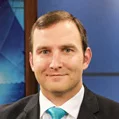While inflation hit a 40-year high in recent months, small business optimism about relief in the near future hit a 48-year low.
That’s according to a new survey of business owners from the National Federation of Independent Business.
“I think our small businesses in particular, were hesitant to raise prices until they had absolutely no other choice and we’re at that point right now,” said Patrick Connor, Director, NFIB Washington. “Unfortunately, between lack of workers, the pandemic shutdowns, supply chain disruptions, we’re now at a point to where small businesses have had to start increasing their prices. About 70% of them already have and another 12% are looking at increasing their prices in the next three to six months, so eight out of ten businesses increasing their prices to consumers is going to be a problem.”
Accompanying high costs, the current business climate is marked by an extremely tight job market.
“They can’t get enough applicants in the door to fill the jobs that they have open,” said Connor.
According to a May 2022 Axios/Ipsos poll 1 in 3 Americans say COVID is behind us, but hospitals in Washington are seeing an uptick in COVID related hospitalizations and urging residents to stay on guard.
“We saw a 10% increase in COVID hospitalized patients from last week to this week,” said Taya Briley, Executive Vice-President of the Washington State Hospital Association. “We also, unfortunately, have some individuals with delayed diagnoses who are coming in sicker, for example, with some cancer or cardiac conditions. And then another thing that really is affecting hospitalizations is the inability to discharge patients. We have a real lack of capacity of places for some of our patients who need post-acute opportunities, places to go in long-term care, for example. They can’t get into those settings.”
Briley says hospital staffing remains difficult in light of the exodus of nurses and doctors who left the field since the pandemic started.
“Even those who work in the ICU have seen unprecedented amounts of death, even for those who are used to working in really high risk areas. It’s just been an unrelenting stretch of hard work and sometimes grim outcomes,” said Briley. “We continue to see a number of staff here in Washington state from outside the state. We want to make sure that those staff can stay.”
“COVID keeps surprising us,” said Briley. ”I don’t think that we can rule out the possibility of a more virulent variant emerging.”
“I don’t have a crystal ball, but there are some inklings of what may be on the horizon. Clinicians are looking towards the fall and are concerned that we may have a rise in COVID cases at that time. I think it’s really important then to be doing all that we can to prevent transmission now so that we don’t have the emergence of more variants that could be more aggressive or virulent in the fall,” said Briley.
Listen to the interviews as a podcast here:
